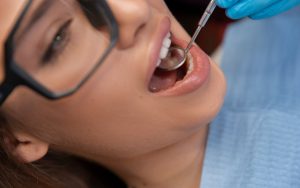Clear aligners have revolutionized orthodontics, offering a discreet and convenient way to achieve a straighter smile. But have you ever wondered how these transparent trays move your teeth with such precision? While they may seem simple, clear aligners are the result of advanced dental technology and meticulous planning.
Unlike traditional braces that rely on metal wires and brackets, clear aligners use custom-fit trays and controlled forces to gradually reposition your teeth. This blog will take you behind the scenes to uncover the science, process, and technology that make clear aligners an innovative solution for teeth straightening, helping you understand exactly how they work to create a healthier, more confident smile.
What Are Clear Aligners?
Clear aligners are transparent, custom-made trays designed to straighten teeth without the need for traditional brackets or wires. Made from medical-grade, BPA-free plastic, these aligners are virtually invisible and fit snugly over your teeth. Their discreet appearance makes them a popular choice for adults and teens seeking a more aesthetic orthodontic solution. The process relies on wearing a series of trays, each slightly adjusted to gradually shift teeth into their desired positions. Unlike braces, clear aligners are removable, giving patients the freedom to eat, drink, and maintain oral hygiene with ease.
Clear Aligners vs. Braces
While both clear aligners and braces aim to correct misaligned teeth, they differ in functionality, appearance, and patient experience:
- Appearance: Clear aligners are nearly invisible, while braces are more noticeable due to metal brackets and wires.
- Comfort: Aligners are smooth and less likely to cause irritation compared to the sharp edges of braces.
- Removability: Aligners can be taken out for meals and cleaning, whereas braces remain fixed.
- Treatment Duration: Aligners often have a shorter treatment timeline for mild to moderate cases.
- Maintenance: Braces require regular adjustments, while aligners involve switching to a new tray approximately every two weeks.
Clear aligners offer a modern alternative to braces, combining convenience, aesthetics, and precision for effective orthodontic treatment.
The Science Behind Clear Aligners
How Clear Aligners Straighten Teeth
Clear aligners use a carefully orchestrated system of controlled force and pressure to guide teeth into their ideal positions. Each set of aligners is designed to move teeth incrementally, typically by 0.25 to 0.3 millimeters per tray. This gradual adjustment reduces discomfort compared to the tightening of braces. The force applied is directed in a specific manner, ensuring teeth move precisely without damaging surrounding structures like gums or bone. Aligners also rely on attachments, small, tooth-colored bumps temporarily bonded to teeth, to improve grip and enhance movement for complex cases.
Clear Aligners Dental Technology
The success of clear aligners lies in the advanced technology behind their design. Dentists or orthodontists use digital scanners to create a detailed 3D map of your teeth and bite, eliminating the need for messy traditional impressions. Specialized software simulates tooth movement and predicts results, enabling the creation of a precise, step-by-step treatment plan. Using computer-guided manufacturing, aligners are crafted to fit your teeth perfectly, ensuring both comfort and efficacy. The aligners themselves are made from flexible yet durable thermoplastics, capable of withstanding daily wear while maintaining the necessary pressure to guide teeth effectively. This blend of biomechanics and cutting-edge technology ensures that clear aligners are not just convenient but also highly effective in achieving predictable and lasting results.
Clear Aligners Treatment Process
The clear aligners process is a personalized journey designed to deliver predictable and efficient results. Here’s a breakdown of the typical treatment steps:
- Consultation and Assessment: Your dentist evaluates your teeth, bite, and overall oral health to determine if clear aligners are the right option. This includes identifying alignment issues such as crowding, gaps, or overbites.
- Digital Scans and Impressions: Advanced 3D scanners create a precise digital model of your teeth. This eliminates the need for traditional molds and ensures a comfortable, accurate representation.
- Custom Treatment Plan: Using specialized software, your dentist creates a step-by-step plan that visualizes tooth movement and the final alignment. This plan also estimates treatment duration.
- Aligner Fabrication: Custom aligner trays are crafted using high-tech manufacturing processes, ensuring they fit snugly and deliver the prescribed movements.
- Wearing the Aligners: Patients wear each tray for about 20-22 hours daily, switching to the next set approximately every two weeks. Each tray slightly adjusts the position of your teeth.
- Routine Checkups: Regular follow-ups allow your dentist to monitor progress and make adjustments if necessary.
- Final Retainer: Once treatment is complete, retainers are provided to maintain the results and prevent teeth from shifting back.
Benefits and Limitations of Clear Aligners
Clear aligners have gained popularity for their convenience, aesthetics, and effectiveness. Here are some standout advantages:
- Discreet Appearance: Clear aligners are nearly invisible, making them ideal for individuals who want a subtle orthodontic solution.
- Comfort: Made of smooth, medical-grade plastic, aligners are less likely to cause irritation compared to metal brackets and wires.
- Removability: Aligners can be removed for eating, drinking, brushing, and flossing, promoting better oral hygiene and eliminating dietary restrictions.
- Shorter Treatment Times: For mild to moderate cases, clear aligners can often achieve results faster than traditional braces.
- Customized Fit: Each aligner is tailored to your teeth, ensuring optimal effectiveness and minimal discomfort.
- Fewer Dental Visits: With no need for frequent adjustments, patients typically require fewer in-office visits during treatment.
Potential Limitations
While clear aligners offer numerous benefits, they are not without challenges:
- Patient Compliance: Aligners must be worn for 20-22 hours daily for effective results, requiring consistent commitment from patients.
- Limited Suitability: They may not be ideal for severe misalignments or complex orthodontic cases requiring advanced correction.
- Initial Discomfort: Some patients may experience pressure or soreness when switching to a new set of aligners.
- Cost: Aligners are often more expensive than traditional braces, which can be a consideration for some patients.
- Maintenance: Aligners require regular cleaning to prevent staining and bacterial buildup.
Understanding these benefits and limitations helps patients make informed decisions about whether clear aligners are the right choice for their orthodontic needs.
Are Clear Aligners Right for You?
Clear aligners are an excellent option for many people, but their suitability depends on several factors unique to each patient. They are ideal for addressing mild to moderate alignment issues such as crowded teeth, gaps, or minor bite irregularities. If you prioritize aesthetics and want a nearly invisible orthodontic solution, clear aligners offer a discreet alternative to traditional braces. Their removability is particularly appealing for individuals who want flexibility in maintaining their oral hygiene or avoiding dietary restrictions.
However, patient commitment is crucial to achieving desired results. Aligners must be worn for 20-22 hours daily, and failure to follow this regimen can prolong treatment or compromise effectiveness. This makes clear aligners a better choice for self-disciplined individuals who can adhere to the treatment plan.
For patients with severe misalignment, complex bite issues, or significant jaw corrections, traditional braces or alternative orthodontic treatments may be more effective. Additionally, factors such as age and lifestyle can influence the decision—clear aligners are popular among adults and teens who prefer a more subtle approach to teeth straightening.
Ultimately, the best way to determine if clear aligners are right for you is through a consultation with your dentist. They can assess your specific needs, explain potential outcomes, and guide you toward the treatment that aligns with your goals and lifestyle.
Myths and Misconceptions About Clear Aligners
Clear aligners are surrounded by several myths and misconceptions that can make potential patients hesitant about choosing this innovative orthodontic solution. One common myth is that clear aligners are only effective for minor adjustments. While they are highly effective for mild to moderate alignment issues, advancements in aligner technology have expanded their capability to address more complex cases, often incorporating attachments or elastics to facilitate challenging movements.
Another misconception is that clear aligners are less effective than traditional braces. The truth is that when used as prescribed, aligners can achieve results comparable to braces for many cases. Their success depends heavily on patient compliance and the quality of the treatment plan designed by a skilled dentist or orthodontist.
Some people mistakenly believe that clear aligners are uncomfortable or less durable. While initial discomfort may occur as teeth adjust to each new tray, this is a temporary and expected part of the process, similar to braces adjustments. Aligners are also made from durable, medical-grade materials designed to withstand daily wear.
Lastly, there’s a belief that clear aligners are maintenance-free. While they are low-maintenance compared to braces, aligners still require regular cleaning to prevent discoloration or bacterial buildup. Addressing these misconceptions helps patients make informed decisions and better understand the benefits and responsibilities of clear aligner treatment.
Conclusion
Clear aligners represent a modern, discreet, and effective solution for achieving a straighter smile. By leveraging advanced technology, personalized treatment plans, and patient dedication, these aligners offer a convenient alternative to traditional braces. From their nearly invisible appearance to the flexibility they provide for eating and oral hygiene, clear aligners have transformed orthodontic care. However, like any treatment, success relies on understanding their benefits, limitations, and the commitment required.
If you’re considering clear aligners, the best first step is to consult with an experienced dentist who can evaluate your unique needs and determine if this innovative solution is right for you. At High Desert Dental, we’re here to guide you through every step of the process, ensuring your journey to a straighter smile is as smooth and effective as possible.
Don’t wait to take the first step toward the smile you’ve always wanted. Call us today at 505-888-2606 or visit us to schedule your consultation. Let us help you discover how clear aligners can transform your smile and boost your confidence!





